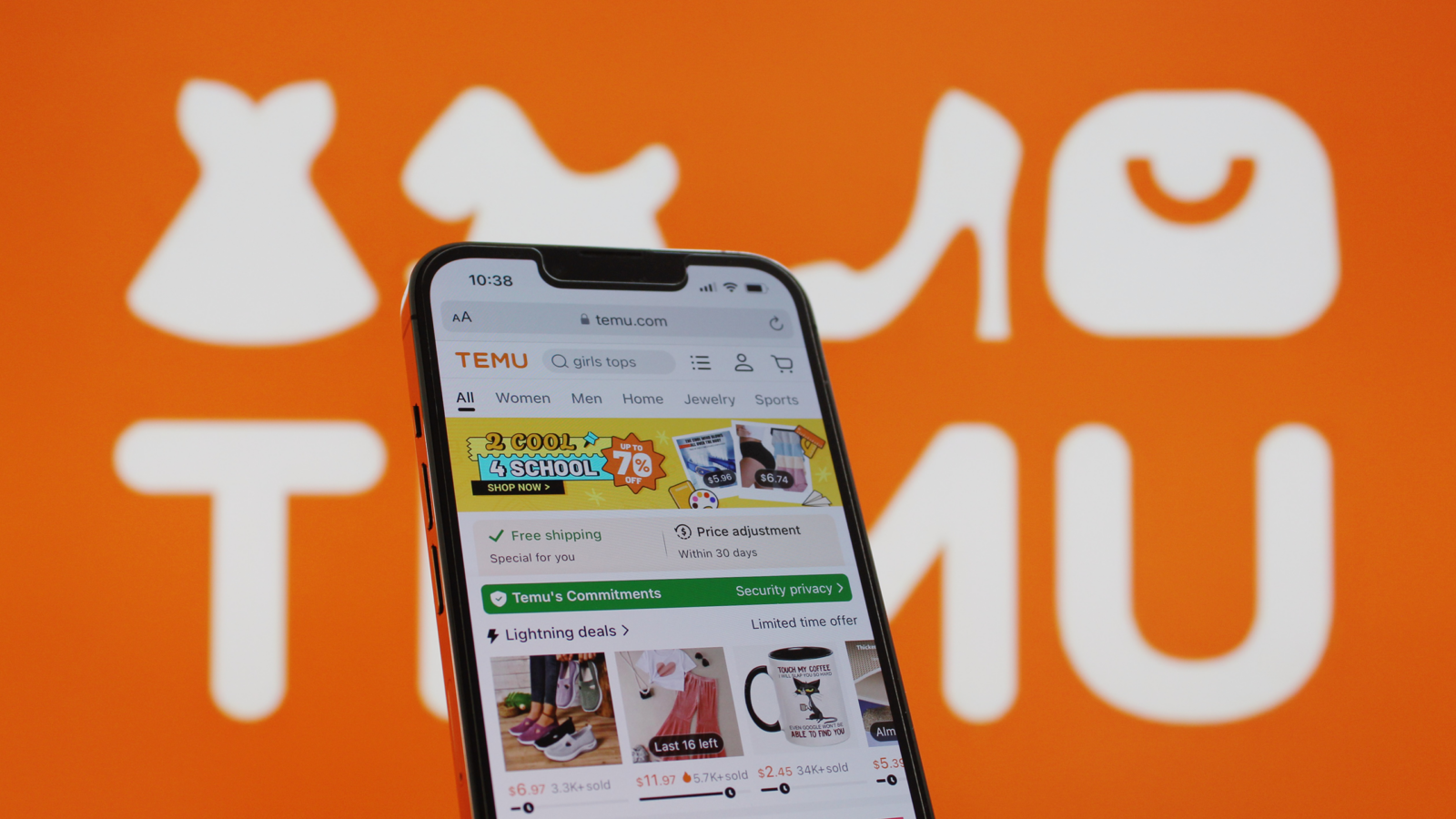Good morning.
Never come between a Starbucks addict and their nearly five-dollar venti mocha latte. Better have good insurance if they’re getting it free.
On Tuesday, the coffee titan’s online ordering app experienced a widespread outage — all while the chain was offering a buy-one-get-one drink promotion to its loyalty members. It comes just a week after the CrowdStrike debacle similarly took out the Starbucks app, though this time around Microsoft’s Azure cloud may have been the culprit, one source told Bloomberg. We’re sure customers waiting in longer-than-normal lines for their caffeine fix were their usual zen selves.
Temu Faces a Supplier Revolt

Don’t forget who was there for you when you were an internet nobody.
Temu, the Chinese e-commerce parvenu, has had a dramatic week. On Monday afternoon hundreds of the company’s suppliers — the people behind its wondrously/worryingly cheap garments — staged a protest outside a Temu office in Guangzhou. Their ire is apparently down to Temu swapping to a more Amazon-esque supplier model (funny, given Amazon is working on a Temu-esque offering) and trying to drive prices ever-downward.
Biting the Hand that Supplies
Sustainability has been a big, dark question mark over Temu’s business model pretty much since its inception. Temu and its fellow China-born e-commerce rival Shein rely on air shipping individual packages around the world, and in the US market (where they’ve both gobbled up a surprising amount of market share in a short time) they’ve relied on a tax loophole called de minimis that exempts them from paying tax on directly shipped items worth less than $800.
Now Temu is gearing up for the possibility that the de minimis window could be closing. Amazon suppliers in the US and EU told the Financial Times that Temu has approached them about storing its goods in their warehouses. Shein, incidentally, has made similar moves ahead of its planned London IPO.
But as Temu looks abroad, its shifting business model is ticking off its bread-and-butter Chinese suppliers:
- Some China-based suppliers told the FT that Temu is moving from a “managed” to “semi-managed” model, which puts more onus on suppliers to organize shipping and warehousing costs. Suppliers also told the FT that they’re unhappy with Temu’s tactics in trying to amass suppliers and play them off each other to drive down prices.
- Third-party sellers told Bloomberg there’s been a recent uptick in Temu withholding payments to suppliers, citing poor customer service. In a statement to Bloomberg, Temu said that it has been in a dispute with some sellers over “after sales issues,” claiming those merchants had “declined to resolve the disputes through the normal arbitration and legal channels stated in the seller agreements.”
Damian Maib, CEO at Asia e-commerce consultancy GENUINE, told The Daily Upside that Temu changing course on its business model was “inevitable,” and: “marks an important step towards becoming a serious contender in Europe and the US, rivaling major platforms like Amazon and Shopify.”
How Low Can You Go? Temu’s price-cutting model makes it an outlier in China’s overall e-commerce market, according to a new report from Nikkei Asia. One senior manager at e-commerce company Taobao told Nikkei that many e-commerce companies are prioritizing user satisfaction over low prices because Temu’s parent company Pinduoduo has everyone beat on price. “Striving for the absolute lowest prices is not a viable strategy when compared to Pinduoduo, which has spent years building a reputation among users for offering the best deals,” the manager said. At least we know the race to the bottom has a finish line.
Could Your Company Culture Use a Refresh?

“Company culture” isn’t just a handy corporate buzzword – it’s the foundation of any thriving business. If your office environment (or remote-work norms) have gone stale, it could be time for a reset.
A thriving company culture isn’t just about free seltzer in the breakroom and pizza Fridays — a stellar culture can help you:
- Drive top-line growth with a team of action-oriented self-starters
- Attract top talent that can transform your business
- Improve employee engagement and reduce turnover (saving you money on recruiting and training costs)
The experts at BambooHR have compiled a comprehensive guide to teach you how to unite your people, boost retention, and keep your organization thriving.
Don’t wait — download the free Definitive Guide to Company Culture.
AI Search Startup Perplexity Launches Ad Revenue-Sharing Program
It didn’t take extraordinary computational firepower to solve this problem. Money did the trick.
In an olive branch-extending move, AI-powered search engine startup Perplexity announced a revenue-sharing program on Tuesday with a handful of media companies that its web-summarizing chatbot may or may not be actively plagiarizing.
Traffic Jam
Perplexity was among the first waves of startups promising to disrupt the search engine industry by offering users AI-generated summaries instead of the typical link-surfing — a service that has now, in typical Silicon Valley fashion, been mimicked by big boys like Google and OpenAI. In the process, Perplexity has run into a fair bit of trouble. Publishers, already wary of the service’s potential to systematically destroy crucial traffic derived from search results, noticed pretty quickly that Perplexity’s summaries looked all too familiar. The startup has faced accusations of plagiarism and legal threats from myriad voices, including Forbes, Condé Nast, and even Amazon.
The ad revenue-sharing program — headlined by partners like Fortune, Time, and WordPress.com — could help quell some dissent, and help publishers score a few much-needed pennies as tech giants continue to evolve the internet past them:
- Perplexity’s program offers “a much better revenue split than Google, which is zero,” Matt Mullenweg, CEO of WordPress.com and Tumblr parent company Automattic, told The Verge.
- According to some estimates, AI search summaries could soon eat away as much as 60% of the traffic publishers get from traditional search engines, obliterating billions in ad revenue in the process.
Search and Destroy: A Perplexity spokesperson told The Verge that “the plan is to start introducing ads in September.” It could surely use the revenue. AI is incredibly expensive to run, and Perplexity, which has likely raised less than $500 million total, doesn’t have billions like its Big Tech competitors. That means it might not be able to beat Google — still slowly rolling out its competitor service — to the AI-search punch. And the internet as we know it may look a lot different on the other side.
In a recent appearance on the “Search Engine” podcast, veteran tech journalist and pundit Casey Newton said Google’s move to let AI summaries supplant traditional search results “essentially put[s] the web in a state of managed decline,” as the company makes the implicit argument that “the web was really useful for 25 years, but we don’t need it anymore. Because with generative AI, we’ll be able to tell you anything that the web would’ve told you, and you’re not even going to have to leave Google to get the information.” Meet the new search boss…
Bill Ackman’s Pershing USA Officially Slashes IPO Fundraising Target to $2 Billion
Nothing Bill Ackman does is small or quiet. That includes his course corrections.
Ackman’s Pershing Square Capital Management announced Tuesday that its planned initial public offering for a US closed-end fund will raise $2 billion, or less than a tenth of the $25 billion he said it could raise earlier this month.
Keep a Closed Mind
Pershing Square USA, as the fund is to be named, will represent Ackman’s first new investment vehicle in 10 years, and expects to sell up to 40 million shares priced at $50 each, according to an SEC filing. But its closed-end structure raised concerns among big investors that Ackman’s initial $25 billion ambitions, which would have made for one of the biggest IPOs of all time, were aiming for Icarus-level heights.
That’s because closed-end funds — unlike open-end funds, which are traded directly through the investment company behind them — are traded on a stock exchange. While an open-end fund is usually redeemable at net asset value, a closed-end fund’s redeemable value is subject to the whims of the markets, like any other stock. And they have a record of trading at a discount, hence the concerns about flooding the market with a $25 billion raise. None of this means Pershing Square USA is unbowed:
- Pershing Square Capital has put $500 million of its own money in the fund, with Ackman betting that retail traders will have an appetite for the listing, citing his social media “notoriety” and an offering that will mimic his hedge fund, which has a 16.5% annualized net return since launching in 2003, compared to the S&P 500’s 10%. “We believe that the most important factor for creating long-term value for Pershing Square Inc is not the size of the PSUS IPO, but how it trades in the market,” Ackman wrote last week.
- A $2 billion fundraise in a closed-end fund structure is no small feat these days: There were zero new closed-end funds raised last year and only six in 2022. Underwriters including Citigroup Global Markets, UBS Securities, BofA Securities, and Jefferies have been given the option to buy an additional 6 million shares at the IPO price, which could add $300 million more to the fund.
If Past is Prologue: Pershing Square USA will begin trading on the NYSE on Aug. 6, but its parent hedge fund already has a closed-end fund trading in Europe. Pershing Square Holdings, listed in Amsterdam with a market cap of $10.4 billion, traded at just over a 20% discount of its net asset value and was up 6.4% this year as of July 23, according to the fund’s website. That’s well behind the S&P 500’s 14% return.
Extra Upside
- It’s Settled: Meta agrees to $1.4 billion settlement in a Texas biometric data lawsuit.
- First Class: Spirit Airlines goes upscale, planning to introduce free Wi-Fi, checked bags, and snacks.
- What’s the ROI on Your Loyalty Program? Most brands can’t tell you if their rewards strategy is actually changing customer spending. Scary, right? Chat with Tandym and learn more about a better rewards strategy with Branded Payments (plus get a $100 Amazon gift card when you take a demo).*
* Partner

